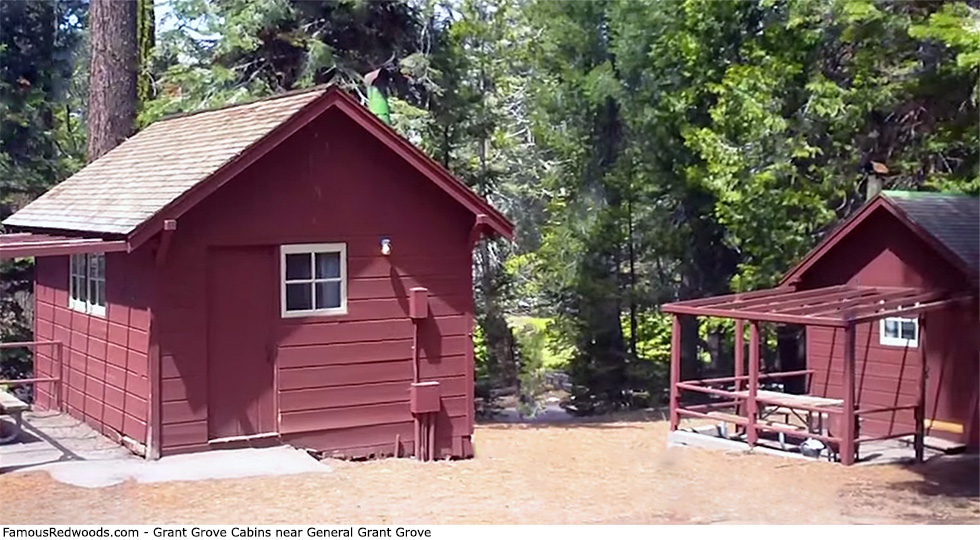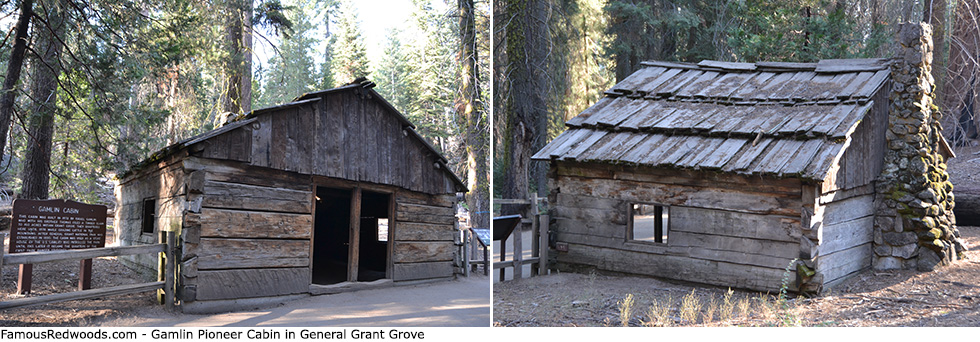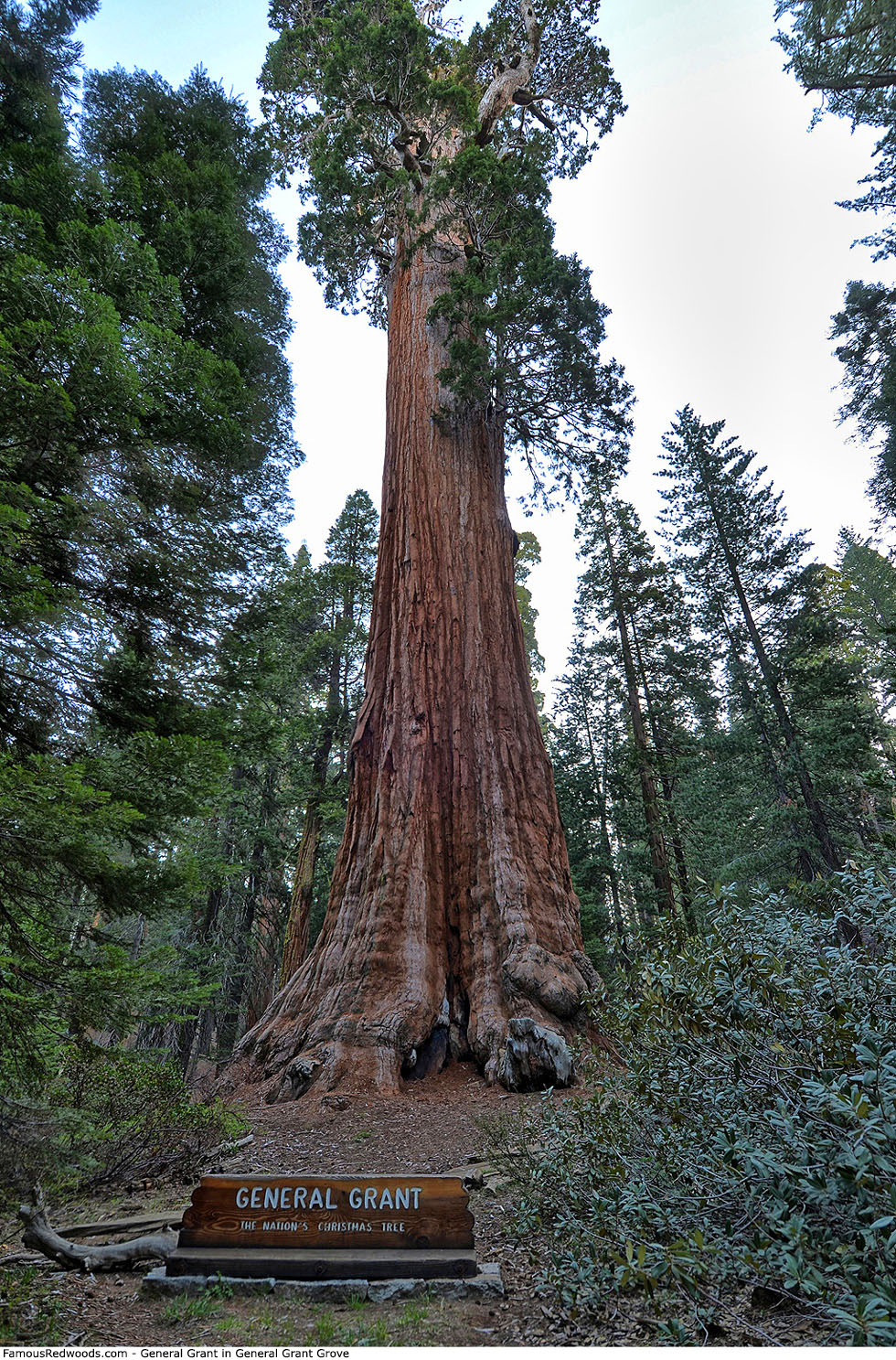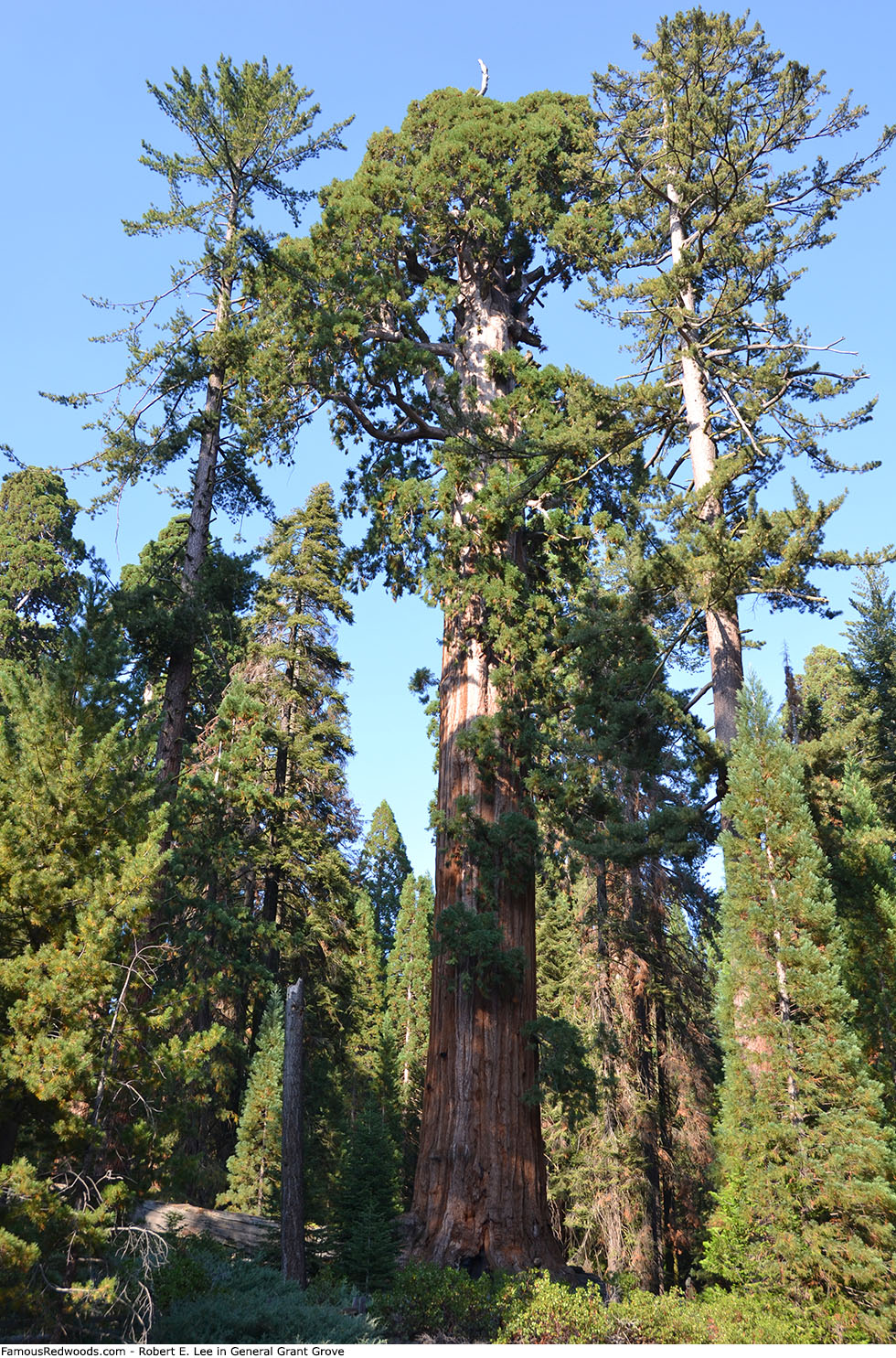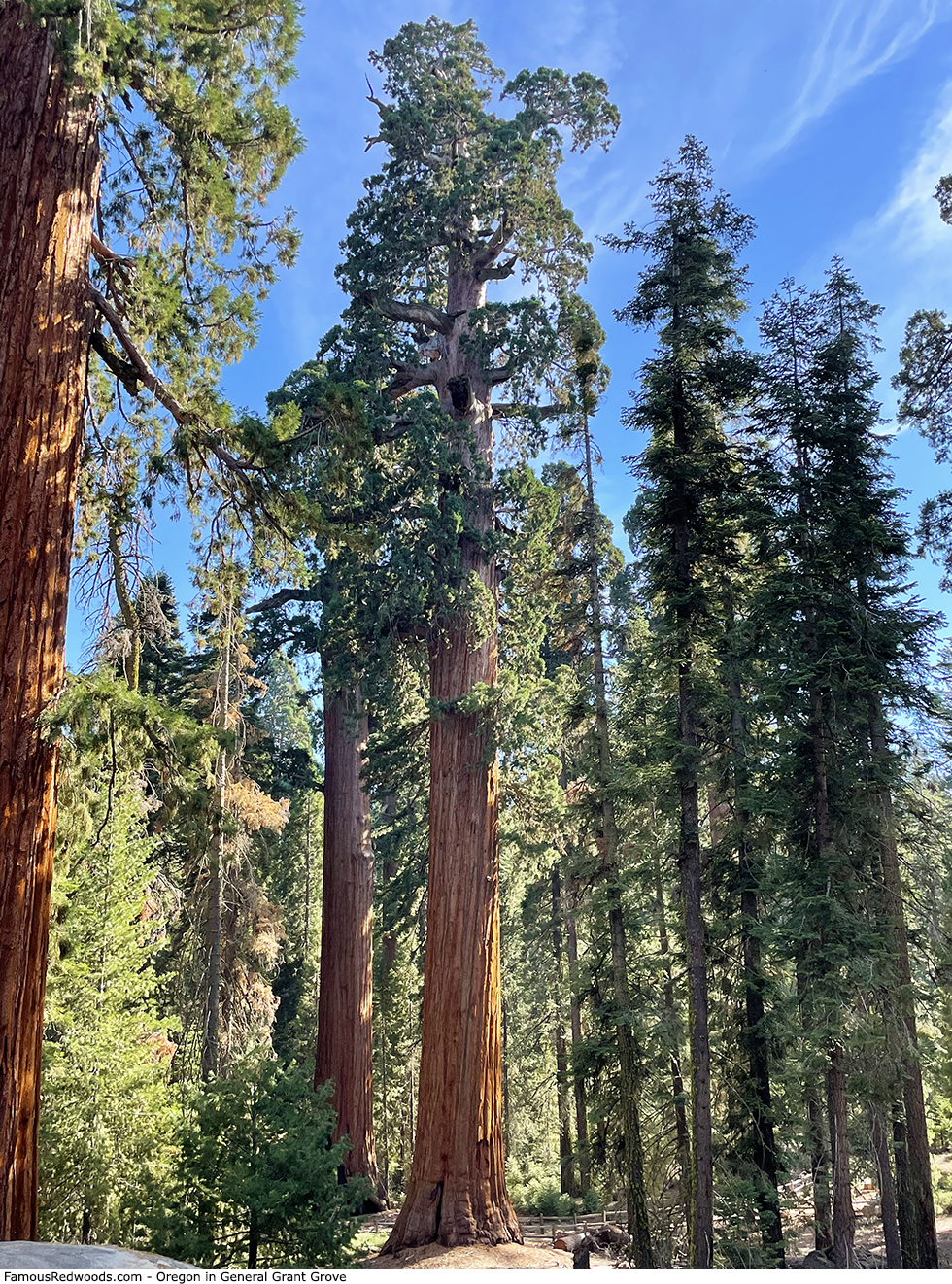
Notes: General Grant Grove, named to honor Ulysses S. Grant, Commanding General of the United States Army and 18th President of the United States, is located near Big Tree Creek in both the northern section (Hume Lake Ranger District) of Giant Sequoia National Monument (western half of the grove) and Kings Canyon National Park (eastern half of the grove).
On October 1, 1890, President Benjamin Harrison signed legislation which established General Grant National Park to preserve General Grant Tree and neighboring giant redwoods in the eastern half of General Grant Grove. On March 4, 1940, President Franklin D. Roosevelt signed legislation which established Kings Canyon National Park which encompassed General Grant National Park.
General Grant Grove includes the widest giant redwood (General Grant), the largest tree in Kings Canyon National Park (General Grant), and 3 of the 20 largest trees on Earth (General Grant, Oregon, and Robert E. Lee). The grove contains 4 trees larger than 30,000 ft3 (850 m3), 3 trees larger than 35,000 ft3 (991 m3), 2 trees larger than 40,000 ft3 (1,133 m3), and 1 tree larger than 45,000 ft3 (1,274 m3).
General Grant is the largest tree in General Grant Grove.
General Grant Grove contains the following giant redwoods:
|
|
|
|

Photos: Pictures of General Grant Grove

